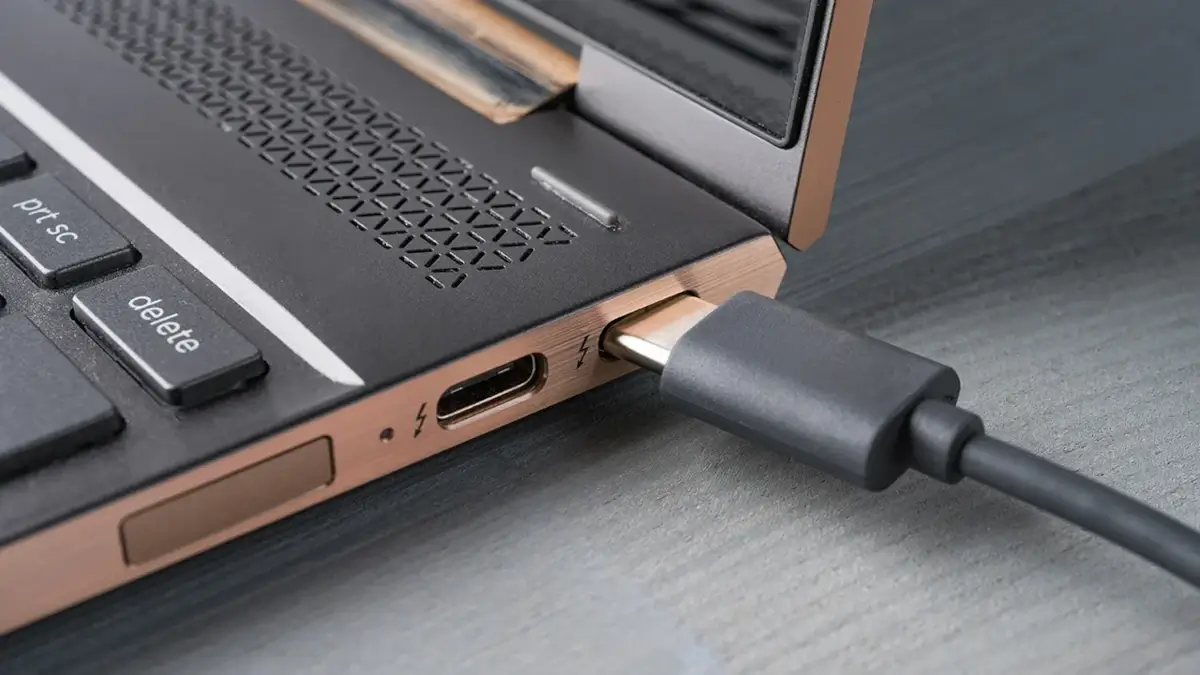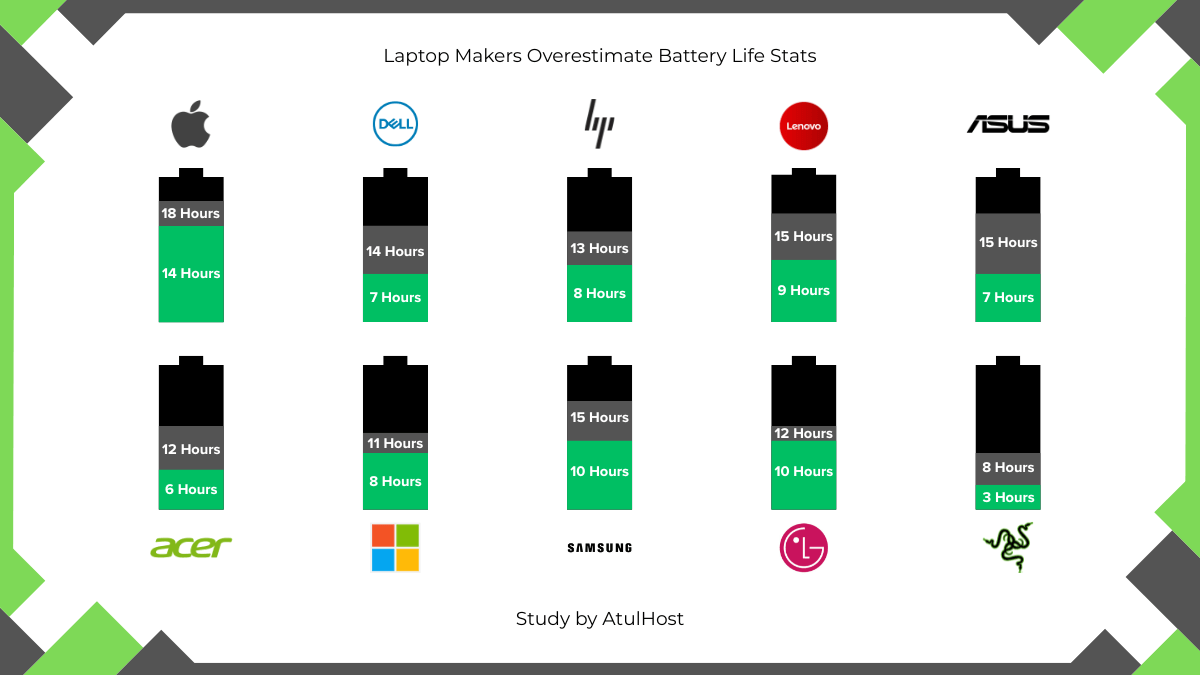The Great Laptop Lie: Why your laptop’s battery never lasts as long as advertised? Not even under low profile mode!
You’ve been there. You unbox your shiny new laptop, marvel at its sleek design, and the first thing you notice is the promise: “Up to 15 hours of battery life”.
A wave of relief washes over you—freedom from the power cord, finally!
But within a week, battery calibrates, and reality sets in. You’re lucky to get 6 or 7 hours before that dreaded “low battery” warning pops up.
What happened? You didn’t get a lemon. You fell victim to an industry-wide open secret: laptop manufacturers systematically overestimate battery life stats.

This isn’t a simple case of optimism; it’s a result of meticulously crafted marketing tests that bear little resemblance to how you actually use your computer. Let’s pull back the curtain and expose the truth, with evidence from the top 10 laptop brands.
The Magical (Misleading) World of “MobileMark”.
The primary culprit is the standardized test many manufacturers use: MobileMark 2014 or similar industry benchmarks.
To achieve those eye-popping “up to” numbers, manufacturers conduct the test under a set of conditions that are, frankly, unrealistic:
Dimmed Screen: The brightness is set to a low, often unworkable level, like 150 nits or even lower. (You probably use yours at 50-70% brightness).
Minimal Activity: The test runs a script that alternates between periods of idling and very light web browsing. Running just low profile applications.
Flight Mode Features: All background processes are disabled, Wi-Fi is often turned off, and only specific, non-demanding applications are used.
Optimal Settings: Power-hungry components like the dedicated GPU (if present) are completely disabled. Keyboard backlit and similar fancy lights disabled.
In essence, they test the laptop in a coma, not in the meeting room, coffee shop, or classroom where you actually work.
The Evidence: A Reality Check for Top 10 Brands.
Let’s look at how the claims from major brands stack up against the findings of independent, rigorous reviewers like Laptop Mag, Tom’s Guide, and CNET.
Their tests typically involve continuous web browsing over Wi-Fi at a standard 150-nit brightness or a video playback test—still generous, but far more realistic.
When I tested things manually battery life were like this:
CLAIM (GREY) versus REALITY (GREEN)

Here’s a complete breakdown of the battery life “Claim (up to) vs. Reality (approx)” for prominent brands and their popular models:
| Brand | Claimed Battery Life (Up To) | Real-World Test Results (Approx.) | The Reality Gap |
|---|---|---|---|
| 1. Apple (MacBook Air M-series) | 18 hours | 14 – 16 hours | The Closest to Truth. Apple’s shift to its own silicon has been a game-changer. While you might not hit 18 hours of heavy use, their estimates are surprisingly achievable under mixed use, making them one of the most trustworthy. |
| 2. Dell (XPS 13/15) | 14 hours | 7 – 10 hours | Significant Overstatement. The beautiful, power-hungry displays on Dell’s flagship XPS line drain the battery much faster in real-world tasks than Dell’s marketing suggests. |
| 3. HP (Spectre x360) | 13-17 hours | 8 – 11 hours | Major Discrepancy. HP is one of the biggest offenders, often claiming numbers north of 15 hours. Independent tests consistently show these premium convertibles last a solid workday, but not much more. |
| 4. Lenovo (ThinkPad X1 Carbon) | 15+ hours | 9 – 12 hours | Optimistic Projections. Known for business reliability, ThinkPads have good battery life, but the “15+ hour” claim is reserved for the most extreme power-saving scenarios. |
| 5. ASUS (ZenBook Series) | 15-18 hours | 7 – 10 hours | Wildly Inflated. ASUS frequently uses the highest “up to” numbers in the industry. Real-world usage, especially with their OLED screen options, cuts these numbers by more than half. |
| 6. Acer (Swift Series) | 12-15 hours | 6 – 9 hours | Consistently Overstated. Acer’s budget-friendly Swifts offer decent value, but their battery life claims should be taken with a heavy dose of skepticism. |
| 7. Microsoft (Surface Laptop) | 11-19 hours | 8 – 12 hours | Varies Widely. Microsoft’s claims can be all over the map. The lower-end claims are closer to reality, while the “up to 19” for an ARM-based model is a best-case scenario that’s hard to replicate. |
| 8. Samsung (Galaxy Book) | 15-20 hours | 10 – 14 hours | Ambitious Claims. Leveraging their mobile expertise, Samsung’s battery life is actually quite good, but the 20-hour claim is a fantasy for anyone actually using the device. |
| 9. LG (Gram Series) | 12-25 hours+ | 10 – 18 hours | The “Longest” Can Be Misleading. The LG Gram is a battery life champion due to its huge capacity and lightweight design. However, the extreme “25.5-hour” claim on some models is for a specific, low-power benchmark, not real use. It’s great, but not that great. |
| 10. Razer (Blade Series) | 8-10 hours | 3 – 5 hours | The Worst Offender. Gaming laptops are in a league of their own. Razer’s claims of near all-day battery are laughable. Under any load, the powerful GPU and high-refresh-rate screen devour the battery in a matter of hours, often less than two during gaming. |
Why Do They Get Away With This?
The “Up To” Loophole: This is the magic phrase. “Up to” is a legal and marketing shield. They aren’t technically promising you will get that life; they’re saying it’s the maximum possible under perfect, lab-grown conditions.
Lack of Standardized Real-World Testing: There is no industry-wide, consumer-focused battery test. Without a common, realistic standard, manufacturers will always choose the test that makes their product look best on the spec sheet.
The “Spec Sheet” War: In a competitive market, a bigger “up to” number is a powerful sales tool. It catches the eye of a buyer comparing two similar laptops.
How to Find the Real Battery Life Before You Buy?
Stop looking at the manufacturer’s claim. Instead:
Read Professional Reviews: Trusted tech publications are your best friend.
They perform standardized, repeatable battery tests (like continuous web browsing at 150 nits) that allow for direct comparison between models.
Look for the Test Methodology: A good review will state exactly how they tested the battery. Prefer those that use a realistic workload.
Ask in Forums: Communities like Reddit (e.g., r/laptops) are full of real users who will give you unfiltered experiences with specific models and configurations.
The Bottom Line.
The “up to” battery life stat is a marketing tool, not a practical guide. It’s designed to win the spec sheet battle, not to accurately inform you.
While Apple has recently set a new bar for accuracy with its M-series chips, the rest of the industry still plays the old game. As a consumer, your power lies in skepticism and research. Ignore the big number on the box and seek out the truth from those who have no vested interest in selling you the dream.
Your next laptop likely has a good battery that can last a full workday—just don’t expect it to be the “all-day” marathon the manufacturer promised.
Leave a Reply